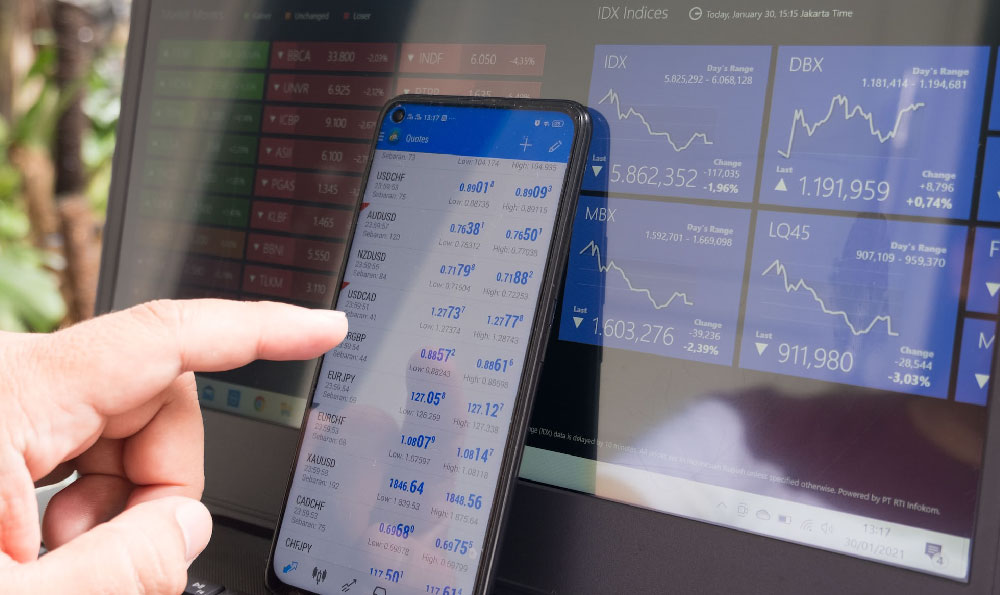Are You Safe From BitMEX Anti-Liquidation? What Precautions Should You Take?
Are You Safe From BitMEX Anti-Liquidation? What Precautions Should You Take?
Understanding BitMEX Liquidation Mechanisms
BitMEX, a prominent cryptocurrency derivatives exchange, offers traders the opportunity to leverage their positions, potentially amplifying both profits and losses. However, this leverage comes with inherent risks, particularly the risk of liquidation. Liquidation occurs when a trader's position falls below the maintenance margin, forcing the exchange to automatically close the position to prevent further losses. This can result in a significant financial setback, especially for inexperienced traders. Therefore, understanding BitMEX's liquidation mechanisms is paramount for anyone participating in leveraged trading on the platform.

BitMEX employs a fair price marking system to determine when a position is at risk of liquidation. This system considers the underlying spot price and the impact bid of the market to provide a more accurate reflection of the asset's value than relying solely on the last traded price. This helps prevent cascading liquidations triggered by temporary price fluctuations, often referred to as "wicks". Despite this, rapid market movements can still trigger liquidations, highlighting the importance of robust risk management strategies.
The initial margin requirement on BitMEX depends on the leverage chosen. Higher leverage requires a smaller initial margin but also makes the position more susceptible to liquidation. The maintenance margin is a percentage of the initial margin and represents the minimum collateral required to keep the position open. When the margin balance falls below this level, liquidation is triggered.
Factors Influencing Liquidation Price
Several factors can influence the liquidation price of a BitMEX position. These include:
-
Leverage: Higher leverage reduces the distance between the entry price and the liquidation price, increasing the risk of liquidation.
-
Position Size: Larger positions require more margin, and therefore, a smaller adverse price movement can trigger liquidation.
-
Maintenance Margin: Different contracts and leverage levels have varying maintenance margin requirements. It's crucial to understand these requirements before opening a position.
-
Funding Rates: Funding rates are periodic payments exchanged between traders based on the difference between the perpetual contract price and the underlying spot price. Positive funding rates can increase the cost of holding a long position, while negative funding rates can benefit it. Unexpected funding rate changes can impact the margin balance and potentially trigger liquidation.
-
Market Volatility: High market volatility can lead to rapid price fluctuations, increasing the likelihood of liquidation.
Essential Precautions to Safeguard Against Liquidation
Preventing liquidation requires a proactive and disciplined approach to risk management. Here are several precautions traders should take:
-
Choose Appropriate Leverage: While high leverage offers the potential for significant gains, it also significantly increases the risk of liquidation. Begin with lower leverage levels and gradually increase them as your understanding and risk tolerance evolve. Consider using leverage levels that allow for sufficient margin to withstand potential market fluctuations. A general rule of thumb is to avoid exceeding 5x leverage for beginners.
-
Utilize Stop-Loss Orders: Stop-loss orders automatically close a position when the price reaches a specified level. This can help limit potential losses and prevent liquidation. Place stop-loss orders strategically, considering market volatility and potential price swings.
-
Monitor Your Position Actively: Regularly monitor your position and margin balance. Pay attention to market news and events that could impact the price of the underlying asset. BitMEX provides real-time margin information, allowing traders to track their risk exposure.
-
Understand Funding Rates: Be aware of funding rates and how they can affect your margin balance. Factor potential funding rate changes into your risk assessment.
-
Diversify Your Portfolio: Avoid putting all your capital into a single trade. Diversifying your portfolio across multiple assets can help mitigate the impact of a single losing trade.
-
Use Isolated Margin: BitMEX offers both cross margin and isolated margin. With cross margin, the entire account balance is used to maintain positions, increasing the risk of liquidation of all open positions. Isolated margin isolates the margin to a specific position, limiting the risk to that position only. Consider using isolated margin, especially when trading with higher leverage.
-
Calculate Your Liquidation Price: Before opening a position, calculate the liquidation price based on your leverage, position size, and maintenance margin. This will give you a clear understanding of your risk exposure. BitMEX provides tools and resources to help traders calculate their liquidation prices.
-
Stay Informed and Educated: Continuously learn about trading strategies, risk management techniques, and the specific features of the BitMEX platform. The cryptocurrency market is constantly evolving, so it's essential to stay informed and adapt your strategies accordingly.
Advanced Strategies for Liquidation Avoidance
Beyond the fundamental precautions, experienced traders may employ more advanced strategies to avoid liquidation. These strategies require a deeper understanding of market dynamics and BitMEX's trading platform.
-
Hedging: Hedging involves taking offsetting positions in related assets to reduce overall risk. For example, a trader holding a long position in Bitcoin on BitMEX could hedge by shorting Bitcoin on another exchange or by purchasing Bitcoin put options.
-
Scaling In and Out of Positions: Instead of entering a position with a single large order, consider scaling in gradually. This allows you to adjust your position based on market movements and reduce the risk of being liquidated due to a sudden price drop. Similarly, scale out of positions gradually to lock in profits and reduce risk.
-
Using Trailing Stop-Loss Orders: A trailing stop-loss order automatically adjusts the stop-loss price as the market moves in your favor. This allows you to protect profits while also limiting potential losses.
-
Analyzing Order Book Depth: The order book provides insights into the buying and selling pressure at different price levels. Analyzing order book depth can help you identify potential support and resistance levels, which can inform your stop-loss placement and position sizing.
Conclusion: Proactive Risk Management is Key
While BitMEX offers the potential for lucrative returns through leveraged trading, it also carries significant risks. Liquidation is a real threat, and traders must take proactive steps to protect themselves. By understanding BitMEX's liquidation mechanisms, choosing appropriate leverage, utilizing stop-loss orders, actively monitoring positions, and staying informed, traders can significantly reduce their risk of liquidation and increase their chances of success in the cryptocurrency derivatives market. Remember that no strategy can guarantee profits, and prudent risk management is essential for long-term success. Always trade responsibly and only invest what you can afford to lose.















